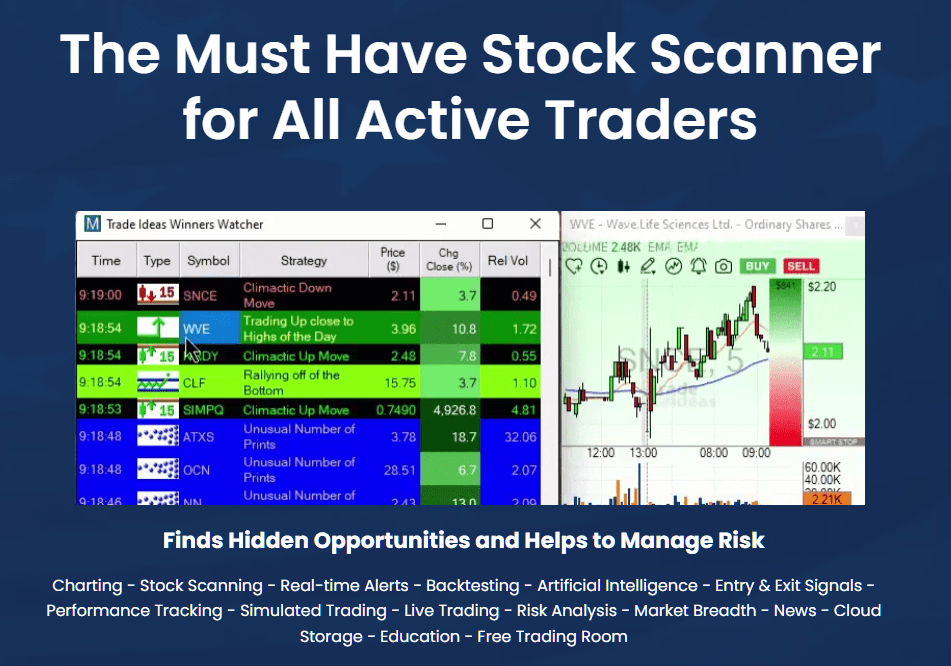20 Handy Ideas For Deciding On Chatgpt copyright Websites
20 Handy Ideas For Deciding On Chatgpt copyright Websites
Blog Article
Top 10 Suggestions For Evaluating Ai And Machine Learning Models Used By Ai Platforms For Analyzing And Predicting Trading Stocks.
The AI and machine (ML) model employed by the stock trading platforms and prediction platforms need to be evaluated to ensure that the data they provide are precise and reliable. They must also be relevant and practical. A model that is not well-designed or over-hyped can lead to inaccurate predictions as well as financial loss. Here are 10 top methods to evaluate AI/ML models that are available on these platforms.
1. The model's approach and purpose
Clarified objective: Determine the model's purpose and determine if it's intended to trade at short notice, investing in the long term, sentimental analysis or managing risk.
Algorithm disclosure: Check whether the platform has disclosed which algorithms it uses (e.g. neural networks and reinforcement learning).
Customization. Examine whether the model's parameters can be tailored according to your own trading strategy.
2. Review the Model Performance Metrics
Accuracy. Check out the model's ability to predict, but do not rely on it alone because it could be inaccurate.
Recall and precision (or accuracy): Determine how well your model can distinguish between true positives - e.g. precisely predicted price fluctuations as well as false positives.
Risk-adjusted returns: Assess if the model's predictions yield profitable trades following taking into account the risk (e.g., Sharpe ratio, Sortino ratio).
3. Make sure you test the model using Backtesting
Backtesting your model with previous data lets you test its performance against prior market conditions.
Tests using data that was not previously intended for training: To avoid overfitting, test the model with data that has not been previously used.
Scenario-based analysis: This involves testing the accuracy of the model in various market conditions.
4. Make sure you check for overfitting
Overfitting: Watch for models that are able to perform well using training data but do not perform well with unseen data.
Regularization: Find out if the platform uses regularization techniques, such as L1/L2 or dropouts to avoid excessive fitting.
Cross-validation. The platform must perform cross validation to test the generalizability of the model.
5. Assess Feature Engineering
Relevant Features: Look to determine if the model has relevant features. (e.g. volume prices, technical indicators, prices as well as sentiment data).
Select features that you like: Choose only those features which have statistical significance. Do not select redundant or irrelevant information.
Updates to dynamic features: Determine whether the model adjusts over time to new features or changes in market conditions.
6. Evaluate Model Explainability
Interpretability: Ensure that the model has clear explanations of the model's predictions (e.g. SHAP values, feature importance).
Black-box models cannot be explained: Be wary of platforms with complex algorithms like deep neural networks.
User-friendly insights : Determine if the platform offers actionable data in a form that traders can use and understand.
7. Review the Model Adaptability
Market shifts: Determine that the model is able to adjust to changing market conditions (e.g., new rules, economic shifts, or black swan instances).
Verify that your platform is updating the model regularly with new information. This will increase the performance.
Feedback loops: Ensure that the platform is incorporating feedback from users as well as real-world results to improve the model.
8. Be sure to look for Bias in the elections
Data bias: Ensure that the training data is accurate to the market and free from biases (e.g. excessive representation of certain segments or timeframes).
Model bias: Determine if the platform actively monitors and mitigates biases in the predictions made by the model.
Fairness: Ensure that the model doesn't disproportionately favor or disadvantage specific stocks, sectors or trading strategies.
9. Calculate Computational Efficient
Speed: Check whether the model is able to generate predictions in real time or with low latency, particularly for high-frequency trading.
Scalability: Determine whether the platform can manage massive datasets and many users without affecting performance.
Resource usage: Make sure that the model has been optimized to make the most efficient utilization of computational resources (e.g. GPU/TPU usage).
10. Transparency and accountability
Model documentation: Ensure that the platform provides complete documentation about the model's design, the process of training as well as its drawbacks.
Third-party audits: Verify whether the model was independently verified or audited by third-party auditors.
Error handling: Determine whether the platform is equipped to identify and correct models that have failed or are flawed.
Bonus Tips:
User reviews and Case Studies User reviews and Case Studies: Read user feedback and case studies in order to evaluate the actual performance.
Trial period: Test the software for free to determine how accurate it is as well as how simple it is use.
Customer Support: Verify that the platform provides solid technical or model-related support.
Use these guidelines to evaluate AI and ML stock prediction models, ensuring that they are accurate and transparent, as well as compatible with trading goals. Read the top find for trader ai app for site advice including getstocks ai, best stock analysis website, investing ai, trader ai app, trade ai, ai trade, ai hedge fund outperforms market, getstocks ai, stock market software, invest ai and more.
Top 10 Tips To Evaluate The Educational Resources Of Ai Stock Predicting/Analyzing Trading Platforms
It is important for users to review the educational tools that AI-driven trading platforms and stock prediction platforms so that they can understand how to utilize the platform effectively, comprehend results and make educated decisions. Here are ten guidelines on how to assess the usefulness and effectiveness of these tools:
1. Complete Tutorials and Instructions
TIP: Check to see whether the platform has steps-by-step instructions and tutorials that are suitable for novices as well advanced users.
The reason: Users can navigate the platform with greater ease with clear instructions.
2. Webinars and Video Demos
You can also look for live training sessions, webinars or videos of demonstrations.
Why: Visual and interactive content can make complex concepts easier to grasp.
3. Glossary
Tips. Make sure your platform has a glossary that clarifies key AIas well as financial terms.
This is to help users, particularly beginners to comprehend the terminology that are used in the application.
4. Case Studies and Real-World Examples
Tip. Check whether the platform offers case studies that show how AI models were applied to real-world situations.
What's the reason? Examples of the functionality of the platform as well as its applications are provided to aid users in understanding it.
5. Interactive Learning Tools
Tips: Search for interactive tools, such as quizzes, simulators or sandboxes.
Why: Interactive Tools permit users to test their skills, practice and improve without risking real cash.
6. Regularly Updated Content
TIP: Make sure to check whether the educational materials have been updated to reflect changes in the marketplace, laws or new features.
Why: Outdated info can result in confusion and make incorrect use of.
7. Community Forums that provide Support
Tips: Look for active support groups or forums where users can share their insights and ask questions.
Why: Expert advice and peer recommendations can help students learn and overcome issues.
8. Programs of Accreditation and Certification
Find out if the school offers accredited or certified courses.
Why? Formal recognition of students' achievements could motivate them to study more.
9. Accessibility, User-Friendliness and Usability
Tips: Evaluate how the accessibility and ease of use of educational resources are.
The reason: Access to the internet is easy and ensures that learners can study at their own pace and convenience.
10. Feedback Mechanism for Educational Content
TIP: Make sure the platform allows users to submit feedback about the educational material.
The reason is that the feedback of users can help improve the quality and relevance of the materials.
Bonus Tip: Learn in different formats
Check that the platform offers various learning formats that can be adapted to different learning styles (e.g. text, audio or video).
When you thoroughly evaluate these elements, you can determine whether the AI stock prediction and trading platform has a robust education component to help you realize its potential and make informed trading decision. Check out the most popular best ai trading app url for more tips including stock market software, free ai trading bot, using ai to trade stocks, ai trading bot, trader ai intal, copyright ai trading bot, chatgpt copyright, ai stock prediction, ai investing app, trading chart ai and more.